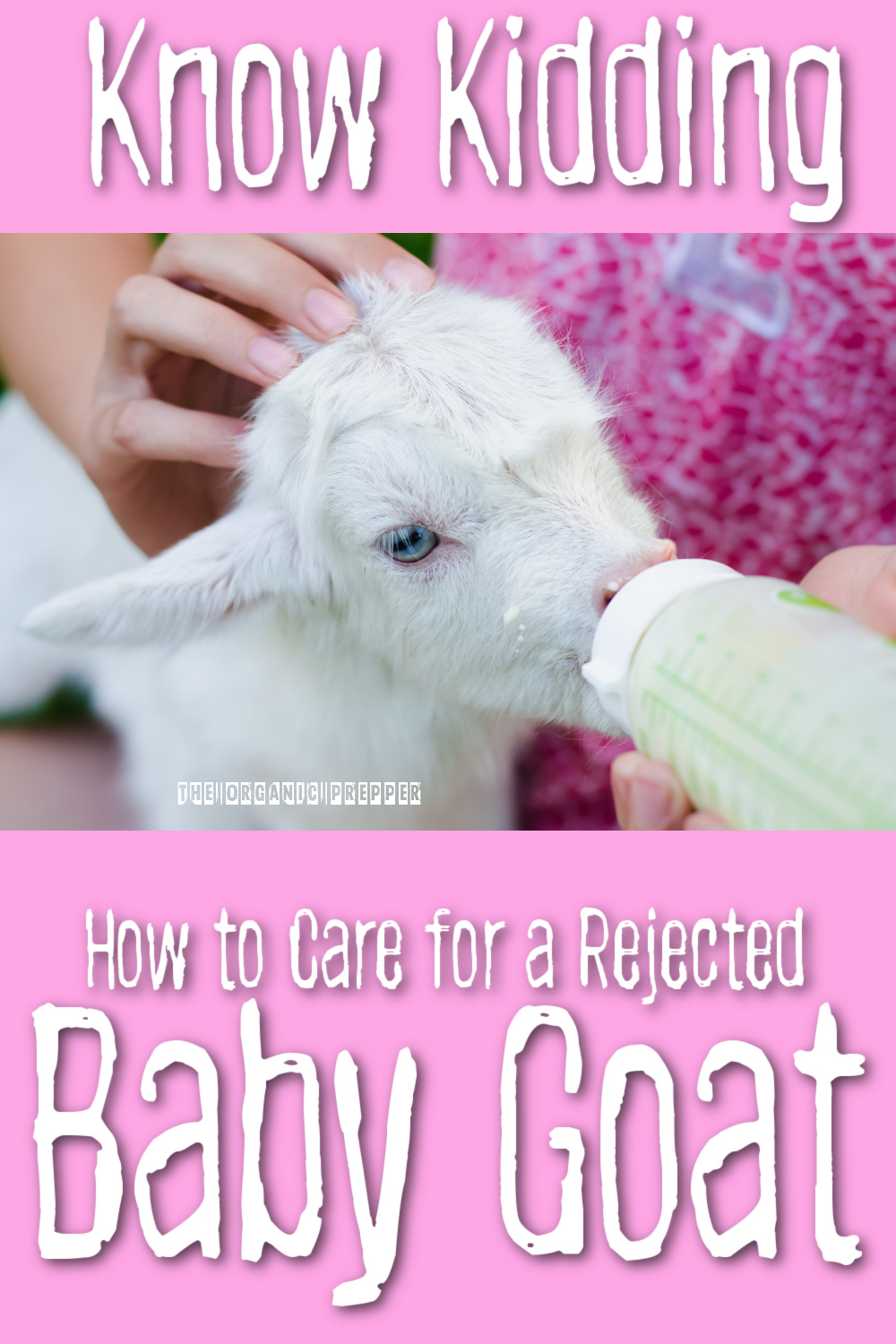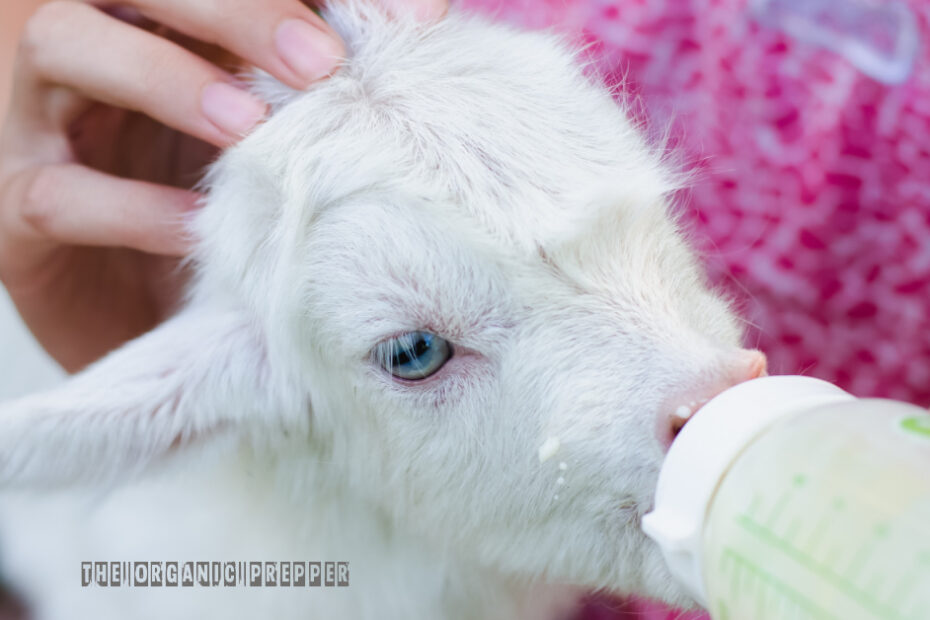[ad_1]
(Psst: The FTC wants me to remind you that this website contains affiliate links. That means if you make a purchase from a link you click on, I might receive a small commission. This does not increase the price you’ll pay for that item nor does it decrease the awesomeness of the item. ~ Daisy)
In my local area, I have noted the number of people who have started gardens (one family even ripped out their entire front lawn) or have small, medium, or even large livestock. While I do not know if they are doing it as a means to stretch their budget or as a concern of food security, they are making an investment.
I myself have invested in small, medium, and large livestock. In the winter, I have to take them water and hay. In the summer, just water. For the most part, they take care of themselves.
However, when it comes to breeding for the next generation, sometimes there is more action required. I have had goats now for about ten years. For the most part, the does (female goats) do their part, and I just stand out of the way. But a few does have rejected their kids (baby goats). It happens.
While yes, they are little creatures I have a responsibility to care for, they are also investments, and I have a few lessons learned I wish to share with you to ensure your success if you so choose to invest in goats as I have.
How to warm up a rejected baby goat
When the doe gives birth, she will lick it clean, then stand and allow the kid to take its first feeding from the doe.
However, if the doe rejects the kid, she will just ignore it. I have had, on two occasions, gone into the barn for morning feedings to find a cold and wet kid, and the mother more interested in breakfast than her kid.
The first thing is to get the kid into the house, cleaned off, and warm. Kids cannot maintain their own body heat for the first 24 to 48 hours.
A quick and easy way to check the temperature is to stick your finger or thumb into their mouth.
- Warm = good.
- Cool = bad.
- Cold = really, really, bad!
The best method I have found for warming them up is to use hot water bottles to keep the kid warm. Once, in a pinch (we could not find the water bottles), we used two 1.5L wine bottles. Since then, I keep two water bottles handy as a “just in case.”
Place the hot water bottles in the bottom of a large enough container like a large laundry basket, a large storage bin, or even a cardboard box. Then put a thin blanket over the bottles to prevent the kid from burning himself. I bring the water bottles to the just-too-hot-to-touch level of warmth. Put the kid in and cover them with another heavier blanket. An electric blanket is a good option, but use the hot water bottles in the meantime while the electric blanket heats up.
What to feed a baby goat
Next, you will want to get colostrum into the kid as soon as possible. Colostrum replacement can be found at most farm/feed stores. Follow the directions on the back. You will also need a bottle to feed the kid. Usually, bottles can be found near the colostrum. A 16oz bottle with one nipple costs less than five dollars.
While you are there, look for a three-pack of additional nipples that will fit the bottle. The nipple does not have an opening, and you are to cut the end off to the appropriate size for the kid. Initially, only a small hole is needed as the kid is small. As the kid grows and feeds at a faster rate, cut a larger hole in another nipple, and so on. By the time the kid weans, you have a set of nipples for future use if need be.
The bottle is not the kid’s mother, so you may have to open the kid’s mouth and insert the nipple. The kid may not latch on to the nipple well at first. Keep paper towels handy! Try to get as much warm colostrum in the kid as soon as possible. Like human babies, kids’ stomachs are small and may only take a few ounces at the first few feedings. Note how much the kid takes in with each feeding.
You can refrigerate the rest of the colostrum for up to eight hours. To reheat, I use a hot water bath in a tempered glass four-cup measuring cup and nuked in the microwave to very hot, steaming water. Put the bottle in the hot bath and wait a few minutes to get it up to about 100 degrees. An instant-read thermometer works well here. According to the package, do not microwave the colostrum-filled bottle itself.
One of the instincts a kid has is to do a head jab at the udder to induce the let-down reflex for the milk flow of the doe. As they get used to the bottle, they still may do the head jab. If you do not have a good grip on the bottle or, as I do, put your index finger over the bottom edge, it is a scaled-down kid version of the Summer Olympic shot put event, and the kid is going for gold! I have had that bottle shoot a good three or four feet across the kitchen, with a stream of milk flowing across the floor. (The dogs loved it.)
Another instinct is they may try to get down on their front knees as they would to get a better angle on the udder and may even try to back up doing so. Keep the bottle at a high degree angle, 45 degrees or slightly more, and put your foot behind their posterior end to stop them from backing up.
The scoop on baby goat poop
Just like human babies, kids will have their first bowl movement, either black or green and tarry one, called meconium, within a few hours of birth. It is gross. Keep wet wipes, paper towels, or a washcloth that you may be willing to part with close at han.
After that, if the kid is going to have to be kept indoors (i.e., in your home), you’re going to want diapers. Yep. Human diapers. Start with the age two size. Then depending on the growth rate, you may have to go up in size in even increments. Just like human babies, they will need to change a few to several times a day.
Just like human babies, pre-prepping is the key to a quick, easy, and reasonably clean diaper changing. One issue about a diaper on a kid is the tail. You will have to cut a hole out in the diaper for the tail. First, what has worked best for us to keep the diaper on, is the tabs side is the side that goes under and between the legs of the kid. Then up in front of the kid’s rear legs and attach to the other side that is on top, across the back. For the tail hole, from the top edge of the diaper, come down about three inches for a newborn and four inches for a month old. Pinch the diaper in half along the center line, and then cut an inch out of the diaper.
Place a large (old) bath towel on the floor. Get wet wipes (more expensive, but they work best), paper towels, or that washcloth at the ready. Put the diaper next to them, unfolded, and oriented to fit the kid. I place the kid between my legs to prevent it from moving with the posterior end directly below me and the anterior end behind me. Remove the old diaper, and place it on a towel if it is really dirty or if there is poop coming out/attached to the posterior end. Clean with wet wipes/paper towels. Clean thoroughly. It may require a few to several wipes/towels. Once the baby goat is clean, then feed the tail through the hole, and pull the top of the back part of the diaper as high as it will go on the back. Then, run the other side under the legs on both sides and then undo the tabs and stick to the top (which would be the waist) of the diaper snugly. Do not over-tighten it because when the kid walks the tab may come undone. If it is dirty when it does, it is a mess you do not want to have to deal with.
While on colostrum or milk replacement, their bowel movements will be yellow to yellowish-orange in color. And it will smell awful. If you can smell it, the diaper needs to be changed.
Keeping a kid in the house can be an . . . interesting endeavor.
Once they get big enough to get out of the laundry basket, bin, or box, then you have to adjust accordingly.
We kept a set of twins the mother rejected in a small, warm space in the mud room with a baby gate. Then they got big enough to jump the gate at will. So, we gave them free rein of downstairs. All was well and good till they learned how to climb stairs and could jump in bed. Thankfully by that time, the weather had turned warm enough that we could kick them outside into the barn.
Note: the twins were separated off from the other goats to include the mother. If the other goats could get to them, the twins could be bullied and even killed by the larger adults. And the mother would do nothing to stop it.
Weaning your bottle baby and moving them to the barn
At about a month and a half, we started leaving Timothy hay in a bowl for the kid to free feed from. The kid will eat more and more from the hay, and you will see a more solid and darker-colored stool. (If you have houseplants you want to keep, put them up out of reach.)
By the time they reach two months, they can be moved out to the barn in their own section. Or, if all the livestock are out, they can stay in the barn until they are large enough to be put in with the rest of the herd.
Like most animals, goats will fight or bully to assert dominance in the herd. Be mindful and watch carefully if the smaller, younger goats are getting bullied too much. If that is the case, you may have to provide them with a separate pen or paddock.
One upside with a bottle-fed goat is they will follow you anywhere. I use management-intensive grazing or mob grazing. When I go to move them to a new paddock, I can let them out of the fencing and even go for a walk, and they will follow me. Work dogs are not required.
Have you ever raised an abandoned baby goat?
I hope this article was of value to you.
If you have your own experiences or lessons learned from raising kids or even lambs, as they are very similar, let’s share them in the comments section.
About 1stMarineJarHead
1stMarineJarHead is not only a former Marine, but also a former EMT-B, Wilderness EMT (courtesy of NOLS), and volunteer firefighter.
He currently resides in the great white (i.e. snowy) Northeast with his wife and dogs. He raises chickens, rabbits, goats, occasionally hogs, cows and sometimes ducks. He grows various veggies and has a weird fondness for rutabagas. He enjoys reading, writing, cooking from scratch, making charcuterie, target shooting, and is currently expanding his woodworking skills.

[ad_2]
Source link
